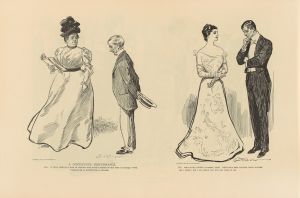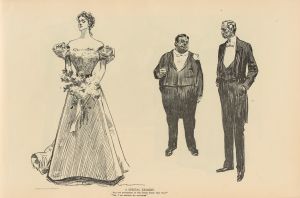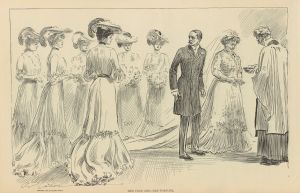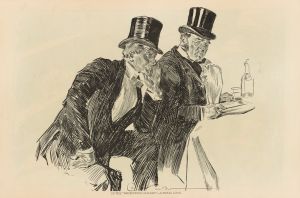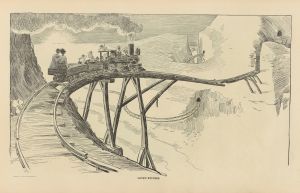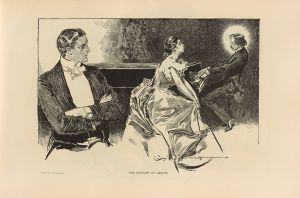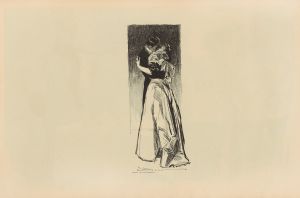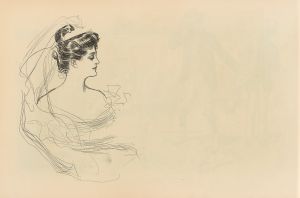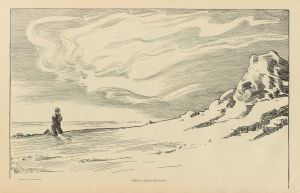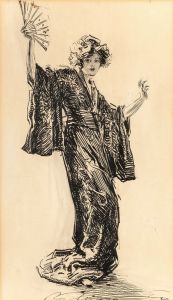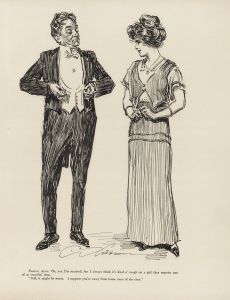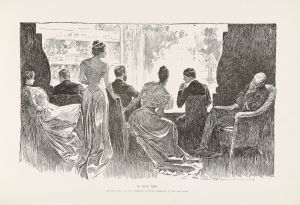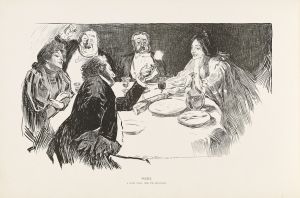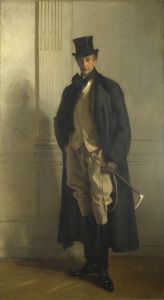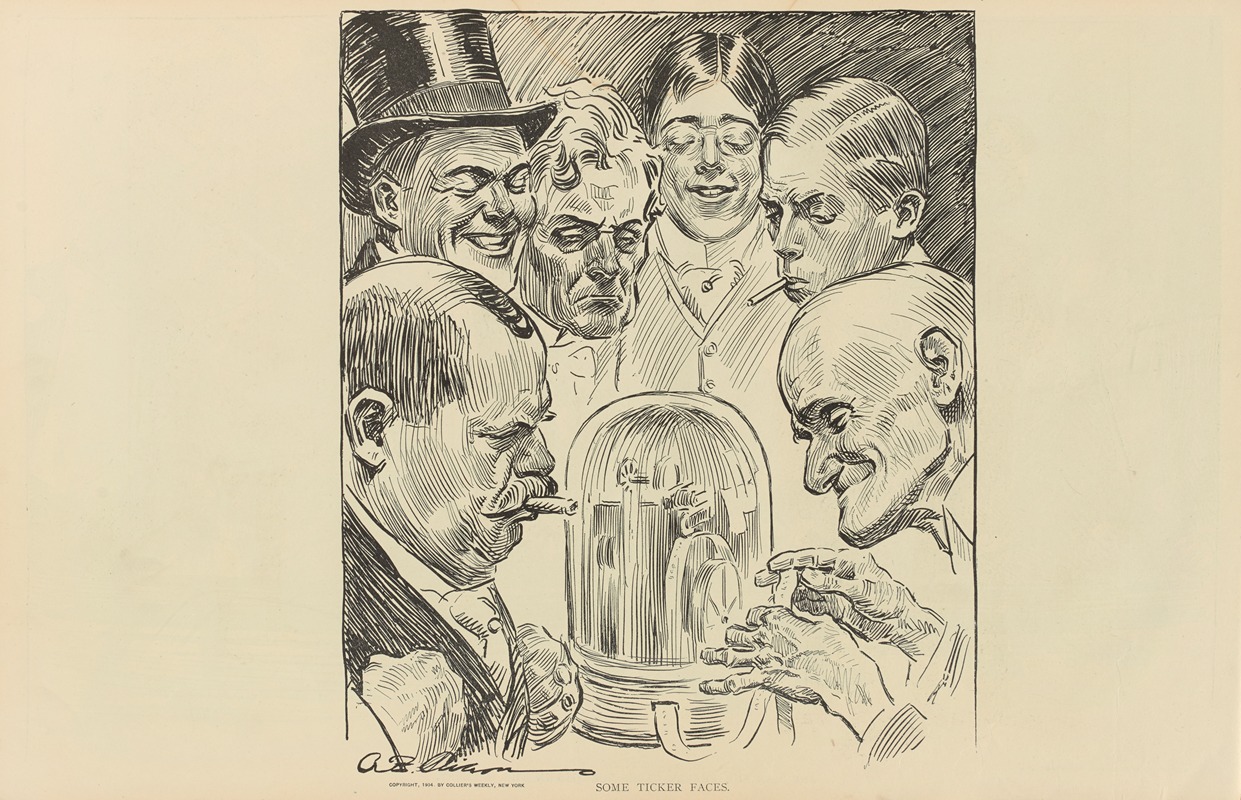
Some ticker faces
A hand-painted replica of Charles Dana Gibson’s masterpiece Some ticker faces, meticulously crafted by professional artists to capture the true essence of the original. Each piece is created with museum-quality canvas and rare mineral pigments, carefully painted by experienced artists with delicate brushstrokes and rich, layered colors to perfectly recreate the texture of the original artwork. Unlike machine-printed reproductions, this hand-painted version brings the painting to life, infused with the artist’s emotions and skill in every stroke. Whether for personal collection or home decoration, it instantly elevates the artistic atmosphere of any space.
Charles Dana Gibson was an influential American illustrator, best known for creating the iconic "Gibson Girl," a representation of the idealized American woman at the turn of the 20th century. Among his numerous works, "Some Ticker Faces" stands out as a notable illustration, capturing the essence of a specific moment in American history.
"Some Ticker Faces" is a black-and-white illustration that was published in the early 20th century. The artwork depicts a group of men intensely focused on a stock ticker tape machine, a device used to transmit stock price information over telegraph lines. This scene is set in a brokerage office, a common setting during the era when the stock market was becoming an integral part of American economic life.
The illustration captures the anxiety, excitement, and tension associated with stock trading. Each character in the scene exhibits a different facial expression, reflecting a range of emotions from anticipation to concern. This diversity in expressions highlights Gibson's keen observational skills and his ability to convey complex human emotions through simple yet effective line work.
Gibson's work often provided social commentary on the times, and "Some Ticker Faces" is no exception. The illustration reflects the growing influence of the stock market on everyday life and the increasing participation of the middle class in financial speculation. During this period, the stock market was becoming more accessible to the general public, and the ticker tape machine was a symbol of modernity and progress.
The men in the illustration are dressed in typical early 20th-century business attire, complete with suits and hats, which adds to the authenticity of the scene. The detailed depiction of the ticker tape machine itself is also noteworthy, as it was a relatively new technology at the time, revolutionizing the way financial information was disseminated.
Gibson's ability to capture the zeitgeist of his era is evident in "Some Ticker Faces." The illustration serves as a historical snapshot, offering insight into the cultural and economic dynamics of the time. It reflects the fascination and trepidation that surrounded the stock market, a theme that remains relevant in today's financial world.
While "Some Ticker Faces" may not be as widely recognized as the "Gibson Girl," it is an important part of Gibson's body of work. It showcases his versatility as an illustrator and his ability to tackle subjects beyond the portrayal of idealized femininity. Through this piece, Gibson not only entertained his audience but also provided a mirror to the society of his time, capturing the complexities of human emotion in the face of economic uncertainty.
In summary, "Some Ticker Faces" by Charles Dana Gibson is a compelling illustration that offers a glimpse into the early 20th-century American stock market culture. Through his masterful depiction of human expressions and attention to detail, Gibson created a work that resonates with historical significance and artistic merit.





